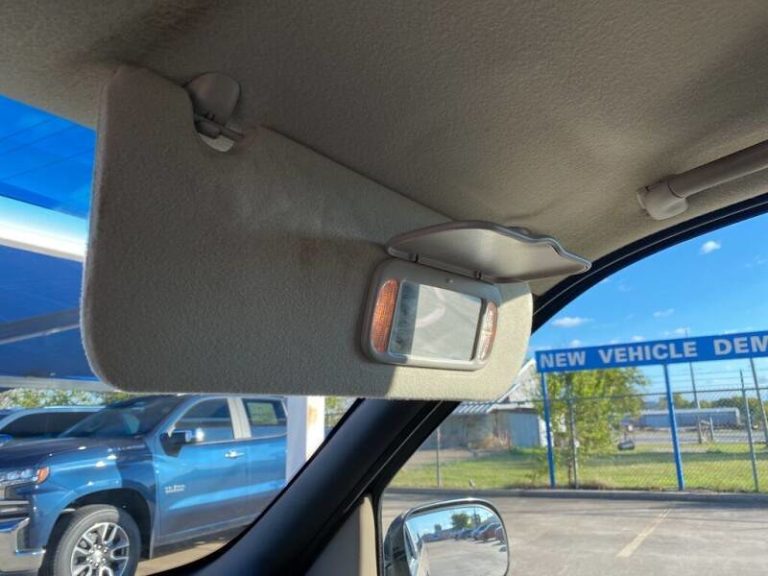Can You Reuse Exhaust Manifold Gaskets? Discover the Power of Sustainability.
No, you cannot reuse exhaust manifold gaskets as they are designed for a single use only. Exhaust manifold gaskets play a crucial role in sealing the connection between the exhaust manifold and the engine block, preventing exhaust gases from leaking out.
Due to the high temperatures and intense pressure experienced in this area, the gaskets are subjected to significant wear and tear. As a result, they often become compressed, deformed, or damaged, compromising their ability to create a proper seal. Reusing a worn-out gasket may lead to leaks, which can cause engine performance issues, increased emissions, and potential damage to other engine components.
Therefore, it is recommended to replace the exhaust manifold gaskets with new ones each time the manifold is removed for maintenance or repair.
Understanding Exhaust Manifold Gaskets
Exhaust manifold gaskets may not be the most glamorous component of your vehicle, but they play an essential role in keeping your engine running smoothly. Understanding exhaust manifold gaskets will help you maintain your vehicle’s performance and ensure a proper seal for optimal exhaust system operation.
Definition And Purpose Of Exhaust Manifold Gaskets
Exhaust manifold gaskets are essentially the seal between the exhaust manifold and the engine block. They are made of durable materials and are designed to withstand the high heat and pressure generated by the exhaust system. The primary purpose of these gaskets is to create a tight seal to prevent any leaks of exhaust gases.
This prevents various issues such as loss of engine power, increased emissions, and potential damage to other engine components.
Types Of Materials Used In Gasket Construction
Exhaust manifold gaskets are typically constructed using a variety of materials, each with its own strengths and weaknesses. Commonly used materials include:
- Metal: Metal gaskets are often made of multi-layer steel (mls) or graphite-coated steel. These gaskets provide excellent durability and resistance to high temperatures but may require precise installation to ensure a proper seal.
- Fiber: Fiber-based gaskets, such as those made from compressed asbestos or carbon fiber, offer good sealing properties and are more forgiving when it comes to surface irregularities. However, they may not handle extreme temperatures as well as metal gaskets.
- Composite: Composite gaskets combine the benefits of both metal and fiber gaskets. They often consist of a metal core with a fiber coating or facing, providing the best of both worlds in terms of durability and flexibility.
Importance Of Proper Sealing For Efficient Exhaust System Operation
A properly sealed exhaust manifold gasket is crucial for the efficient operation of your vehicle’s exhaust system. Here’s why:
- Sealing efficiency: A tight seal prevents exhaust gases from escaping where they shouldn’t, ensuring that they are efficiently directed through the exhaust system.
- Engine performance: A strong seal helps maintain the back pressure required for optimal engine performance, as any leaks can disrupt the flow of exhaust gases and reduce power output.
- Fuel economy: By maintaining the proper air-to-fuel ratio, a well-sealed exhaust manifold gasket can contribute to improved fuel efficiency.
- Emissions control: A secure seal prevents emissions leaks, helping your vehicle meet regulatory requirements and reducing harmful pollutants released into the environment.
The Environmental Impact Of Manufacturing New Gaskets
While it is important to ensure a proper seal by replacing worn-out or damaged gaskets, it’s worth considering the environmental impact of constantly manufacturing new gaskets. Manufacturing processes can consume energy, generate waste, and contribute to carbon emissions. Reusing exhaust manifold gaskets, when possible, can help reduce this environmental impact and promote sustainability.
By understanding the intricacies of exhaust manifold gaskets, you’ll be better equipped to address any issues that may arise. Whether it’s choosing the right material for your specific needs or considering the environmental impact, proper knowledge will help you make informed decisions for the efficient operation of your vehicle’s exhaust system.
Factors Influencing Reusability
Exhaust manifold gaskets are an essential component in an engine’s exhaust system. When it comes to reusing these gaskets, there are several factors to consider. From the quality and condition of the existing gasket to its compatibility with the manifold and other components, each aspect plays a crucial role in determining its reusability.
By following proper removal and handling techniques and evaluating the gasket’s durability and effectiveness, you can make an informed decision. So, let’s dive deeper into the factors influencing the reusability of exhaust manifold gaskets!
Quality And Condition Of The Existing Gasket:
- A high-quality gasket is more likely to withstand the stress and heat generated by the exhaust system.
- Look for signs of wear, such as cracks, tears, or deformities in the gasket.
- A damaged gasket may not provide a proper seal, leading to exhaust leaks and reduced engine performance.
Compatibility With The Manifold And Other Components:
- Ensure that the gasket is specifically designed for your vehicle’s make and model.
- Check if the gasket material is suitable for the manifold’s construction, such as cast iron or stainless steel.
- Verify compatibility with any additional components, such as turbochargers or catalytic converters.
Proper Removal And Handling Techniques:
- Take care not to damage the gasket during removal. Use appropriate tools and techniques recommended for your specific engine.
- Clean the mating surfaces thoroughly to remove any debris or residue.
- Avoid bending or folding the gasket, as it can lead to leaks when reinstalled.
Evaluation Of The Gasket’S Durability And Effectiveness:
- Consider the gasket’s age and overall condition. Older gaskets may have lost their elasticity and sealing capabilities.
- Assess previous performance: Did the gasket provide a reliable seal? Were there any signs of leakage or overheating?
- Take into account the estimated mileage or engine hours the gasket has endured.
Remember, while it may be tempting to reuse a gasket to save costs, it’s crucial to prioritize safety and performance. Always inspect the gasket thoroughly and consider replacing it if any doubts arise. By following these factors, you can make an informed decision about reusing exhaust manifold gaskets and ensure optimal engine performance.
Now that you understand the key considerations let’s explore each factor in more detail.
Benefits And Limitations Of Reusing Exhaust Manifold Gaskets
When it comes to maintaining and repairing vehicles, finding ways to reduce costs and minimize waste is always a win-win situation. One area where this can be achieved is with exhaust manifold gaskets. These gaskets play a crucial role in sealing the connection between the exhaust manifold and the engine block, preventing any leaks or loss of power.
While reusing these gaskets may seem like a good idea, it is important to consider both the advantages and limitations associated with this practice.
Advantages In Terms Of Cost Savings And Sustainability:
- Cost savings: Reusing exhaust manifold gaskets can significantly cut down on expenses, especially if you are on a tight budget or performing multiple repairs. Instead of purchasing new gaskets every time, you can save money by reusing the ones that are still in good condition.
- Sustainability: By reusing gaskets, you contribute to a more sustainable environment. The production and disposal of automotive parts consume valuable resources and generate waste. By reducing waste and reusing gaskets, you help minimize the impact on the environment.
Reduced Waste And Resources Consumed In Gasket Production:
- Less waste: Reusing gaskets reduces the number of discarded parts that end up in landfills. This is particularly important because some gaskets, such as those made from composite materials or with special coatings, can take a long time to decompose.
- Resource conservation: Manufacturing gaskets requires raw materials and energy. By reusing gaskets, you decrease the demand for new ones, helping to conserve these valuable resources.
Risks Associated With Reusing Worn Or Damaged Gaskets:
- Leak potential: Reusing gaskets that are worn, damaged, or distorted increases the risk of exhaust leaks. If gases escape through the worn gasket, it can lead to reduced engine performance, increased emissions, and potential damage to other engine components.
- Safety concerns: A leaking exhaust system poses a safety hazard as it can release toxic gases, such as carbon monoxide, into the vehicle’s cabin. Reusing gaskets without proper inspection and evaluation can put the occupants at risk.
Recommendations For Determining Gasket Reusability:
- Visual inspection: Before reusing an exhaust manifold gasket, carefully examine it for signs of wear, damage, or distortion. Ensure there are no visible cracks, tears, or areas that have been compressed beyond their original shape.
- Compression test: Perform a compression test to check the seal of the gasket. If the compression test reveals abnormal readings or inconsistencies, it may indicate that the gasket needs to be replaced.
- Manufacturer guidelines: Consult the vehicle’s manufacturer guidelines for specific recommendations on gasket reuse. They may provide specific criteria or guidelines for determining when a gasket should be replaced instead of reused.
Reusing exhaust manifold gaskets can offer both cost savings and sustainability benefits. However, it is crucial to assess the condition of the gasket and evaluate the associated risks. With proper inspection and adherence to manufacturer guidelines, you can determine whether a gasket is suitable for reuse or if it should be replaced with a new one.
Remember, safety and engine performance should always be prioritized to ensure the longevity and reliability of your vehicle.
Tackling Potential Challenges
Proper Cleaning And Inspection Procedures For Used Gaskets
When it comes to reusing exhaust manifold gaskets, proper cleaning and inspection procedures are crucial to ensure optimal performance. Here are the key points to keep in mind:
- Begin by thoroughly cleaning the used gasket, paying close attention to any debris or residue that may have accumulated during its previous use.
- Inspect the gasket carefully, looking for signs of wear, damage, or corrosion, which could compromise its sealing capabilities.
- Check for any visible cracks, tears, or flattening of the gasket material.
- Ensure that the gasket’s shape and dimensions are intact, as any distortion may affect its ability to create an airtight seal.
- Verify that the mating surfaces of the exhaust manifold and cylinder head are clean and free from any debris or damage that could prevent proper gasket adhesion.
Techniques For Restoring Gasket Performance And Sealing Capabilities
Restoring the performance and sealing capabilities of used exhaust manifold gaskets requires specific techniques. Here’s what you need to know:
- Gently flatten out any minor distortions or creases in the gasket using a flat surface and a soft mallet.
- Consider using a gasket sealant or adhesive as an additional measure to reinforce the gasket’s effectiveness.
- Applying heat to the gasket can help it conform to the mating surfaces more effectively, improving the seal.
- If the used gasket shows signs of wear or damage that cannot be repaired, it is recommended to replace it with a new one to ensure a reliable seal.
The Importance Of Torque Specifications During Installation
During the installation of reused exhaust manifold gaskets, adhering to proper torque specifications is essential. Here’s why:
- Tightening the bolts to the manufacturer’s specified torque ensures uniform compression of the gasket material, promoting an effective seal.
- Over-tightening can lead to gasket deformation, resulting in leaks or gasket failure.
- Insufficient torque may not provide enough compression, compromising the integrity of the seal.
- Refer to the vehicle’s service manual or the gasket manufacturer’s recommendations for the correct torque specifications for your specific application.
Verifying Gasket Integrity And Addressing Potential Leaks
To ensure the integrity of reused exhaust manifold gaskets and address any potential leaks, follow these steps:
- After installation, conduct a thorough visual inspection of the gasket and surrounding areas for signs of leakage, such as black soot or exhaust residue.
- Perform a leak test by pressurizing the exhaust system and checking for any audible air leaks.
- If you detect any leaks, carefully inspect the gasket and mating surfaces for possible causes, such as warped or damaged parts.
- Address any leaks promptly by determining the appropriate corrective action, which may involve reseating the gasket, replacing damaged components, or reinstalling with a new gasket if necessary.
Remember, proper cleaning and inspection, restoration techniques, torque specifications, and vigilant leak verification are essential when reusing exhaust manifold gaskets. Following these guidelines will help ensure reliable performance and prevent potential issues down the road.
Conclusion
It is not recommended to reuse exhaust manifold gaskets due to the potential risks involved. Although it may seem cost-effective at first, reusing these gaskets can lead to a variety of problems such as leakage, poor sealing, and even engine damage.
It’s essential to prioritize the performance and safety of your vehicle by using new, high-quality gaskets each time you replace the exhaust manifold. By doing so, you can ensure a proper seal, prevent leaks, and maintain optimal engine functionality. Regularly inspecting and replacing worn-out gaskets can save you from costly repair bills and potential breakdowns down the line.
Remember, investing in new gaskets is a small price to pay for the long-term health and reliability of your vehicle. So, next time you replace your exhaust manifold, always opt for new gaskets for a seamless and worry-free driving experience.
- Finding The Best Truck Bed Tonneau Cover - June 14, 2025
- Truck Bed Cover Parts: A Comprehensive Guide - June 14, 2025
- Finding The Right 2014 Silverado Truck Bed Cover - June 14, 2025


